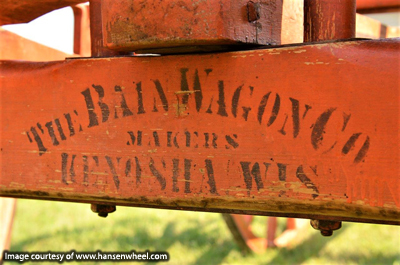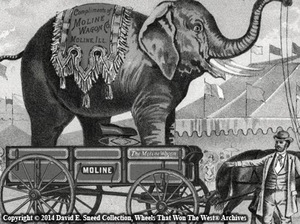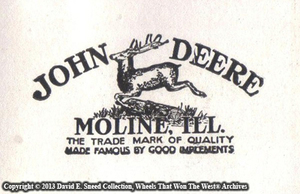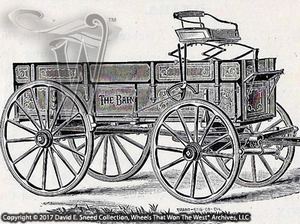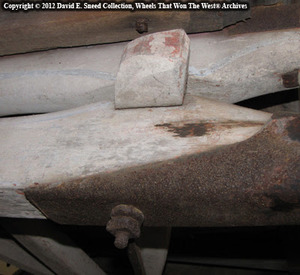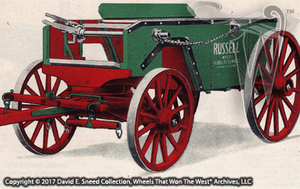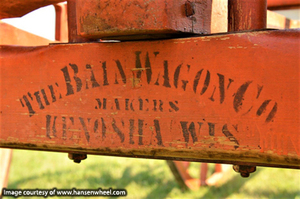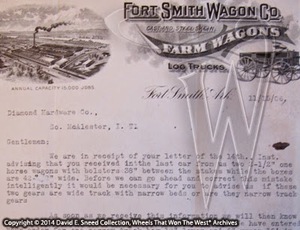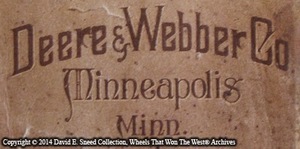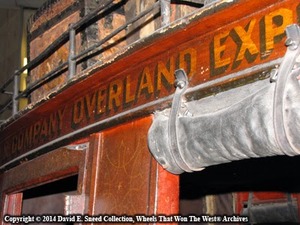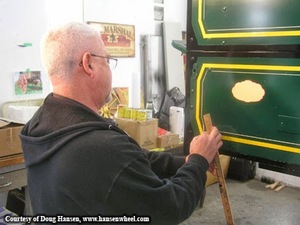I've spent close to three and a half decades in the world of advertising, marketing, and branding. For many, that would be a long time. For some, though, that kind of background is just a beginning. Reinforcing that point, I recently ran across a story of an employee working for a company for almost three-quarters of a century!
The example I'm referring to is that of George Yule. Prior to reading this blog, you may not have heard of Mr. Yule. However, if you're a fan of the legendary 'Bain' wagon brand, you have that same love-for-the-brand in common with him. In the August 1913 issue of "The Carriage Monthly," Mr. Yule was commended for an incredible seventy-one years with the firm! That brief story (shown below) also includes some interesting history of both the Bain and Mitchell wagon companies. As such, and in light of the fact that 2017 marks the 165th Anniversary of the launch of the Bain Wagon Company, I thought I'd pass along this part of our past...
"George Yule, president of the Bain Wagon Co., Kenosha, Wis., has what is probably the most unique record of any man in a responsible position with any big manufacturing concern in the United States. Recently Mr. Yule celebrated the seventy-first anniversary of his connection with the Bain Wagon Co.
For seventy-one years he had just the one employer, and most of the time that he has been connected with the company his position has been one of great influence. Mr. Yule was at his office on his seventy-first anniversary just as early as any of the other employees of the company and, the fact that he was ready to start on a seventy-second year of work seemed to have no effect on him whatever.
Seventy-one years ago on July 1st Mr. Yule went to Kenosha from his father's farm in the town of Somers. At that time the Mitchell and Quarles Co. had only a few employees, but Mr. Mitchell decided to put young Yule to work. In a short time he had worked himself up to a place where he was considered one of the best wagonmakers in the employ of the company, and when the late Edward Bain purchased the Mitchell & Quarles interest in 1852 he made Mr. Yule superintendent of the plant.
For thirty years he served in this capacity, and in 1882, when the company was incorporated under the name of the Bain Wagon Co., Mr. Yule was elected vice-president. In 1890, there were other changes, and with a record of fifty years of continued success, Mr. Yule was elected as president of the company. Later on the heirs of the late Edward Bain retired from the management of the big plant and Mr. Yule become not only the president of the company, but the principal owner of the stock of the concern.
When he went to work for the company, way back before the Civil War, all portions of the wagons were built by hand and the output was only a few wagons a year. The plant now turns out thousands of wagons yearly, and is one of the largest wagon making concerns in the country."
Historical records in the Wheels That Won The West® Archives point out that Mr. Yule came to America from Scotland when he was sixteen. Two years later, in 1842, he was hired by Mitchell & Quarles to help build wagons in Kenosha (then known as Southport). At the time, the Mitchell & Quarles shops were only building about 10-15 wagons each year. They also did repair work on plows and implements for area farmers.
Based on period details from above article as well as our archives, Mr. Yule was not only an influential force inthe earliest days of Bain and Mitchell wagons but, he was there when the U.S. purchased California from Mexico, when gold was discovered in California, when western territories became states, when legendary outlaws were making headlines, when the transcontinental railroad was built, and when so many other major events in the history of the West took place. He even lived to see the automobile and the new challenges of transportation competition in the 20th century. Very few individuals will ever have a front-row-seat to the rise and fall of international commerce the size of America's first transportation industry. Nonetheless, Mr. Yule not only saw these things but was instrumental in guiding one of the biggest brands to shape the American West.
From its beginnings, Bain was never a small endeavor. The brand leapt from its newborn page of possibilities to near-instant national recognition as it capitalized on the factory and distribution network left wholly in place by Henry Mitchell (Mitchell & Quarles). By the late 1860's, the firm was producing several thousand wagons per year and within another decade, annual production numbers were near ten thousand. In 1911, the company was purchased by George Yule and other family members for an estimated $1.5 million. Growth continued into the mid-teens as the company touted 450 employees and a capacity of 18,000 wagons. After transferring his interest in the Kenosha factory to Edward Bain in 1852, Henry Mitchell moved on to Racine, Wisconsin, eventually restarting his empire and building the Mitchell wagon brand into a powerhouse that would be purchased by John Deere in 1917.
Today, the Mitchell and Bain brands continue to be extremely popular with collectors and enthusiasts; and for good reason. The quality, history, reputation, and wide range of designs created by both firms left a legacy that most makers had a tough time competing with. When looking at Bain, a big part of that reputation came from time-honored employees like George Yule who not only was an exceptional wagonmaker but possessed a steadfast loyalty that both grew and protected the brand for generations. Corporate America could still learn from these early business giants.
 |
| Dating to the 1870's, this Bain wagon catalog may be the earliest surviving piece promoting the brand's entire product line. |
Please Note: As with each of our blog writings, all imagery and text is copyrighted with All Rights Reserved. The material may not be broadcast, published, rewritten, or redistributed without prior written permission from David E. Sneed, Wheels That Won The West® Archives, LLC
